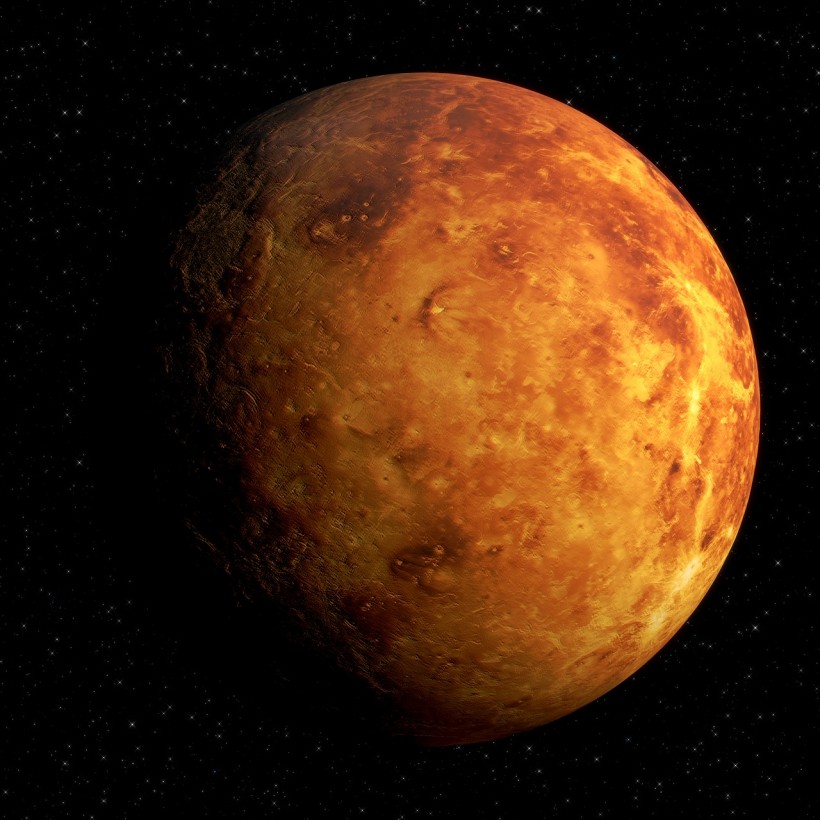Satellite images and computer models indicate the possible formation of fleeting ice clouds in Venus' extreme atmosphere. A recent study, titled "Ephemeral Ice Clouds in the Upper Mesosphere of Venus" published in Advancing Earth and Space Sciences, proposes that water and carbon dioxide condensation into ice particles at high altitudes on Venus could contribute to water retention on the hot planet.

Ice Clouds in Venus' Inferno: Unveiling the Surprising Chilled Layers Above the Scorching Surface
Venus: Hottest Planet in the Solar System
Venus is renowned as the Solar System's hottest planet, exhibiting an infernal surface-reaching temperature of 867 degrees Fahrenheit (464 degrees Celsius), sufficient to liquefy lead.
Despite being the second planet from the Sun, Venus surpasses Mercury in temperature due to its dense atmosphere rich in greenhouse gases like carbon dioxide and traces of nitrogen. The atmospheric composition, including sulfuric acid clouds, contributes to the intense heat retention.
Greenhouse gases enable solar heat to penetrate Venus' surface, but the trapped heat cannot escape, warming the atmosphere-a phenomenon similar to Earth's greenhouse effect, associated with global warming but on a much larger scale on Venus.
In contrast, Mercury lacks an atmosphere, preventing heat retention. Its small size results in insufficient gravity to maintain an atmosphere, leaving the planet without a mechanism to trap heat.
READ ALSO: Mysterious UV Absorber on Venus Atmosphere Identified [Study]
Venus Reveals Mesospheric Clouds in Extreme Atmosphere
Even though Venus is the hottest planet in the Solar System, at an elevation of approximately 75 miles above the volcanic terrain, temperatures plummet to as low as minus 298 degrees Fahrenheit.
In the new study, researchers used computer models to show that in Venus' extreme temperatures, liquid water has the potential to condense into nanoscale crystals of water ice. These minute ice crystals aggregate on smoke particles in the Venusian atmosphere through a process known as nucleation.
From these initial cloud seeds, fully developed clouds can emerge. Should the temperature drop below minus 298 degrees, carbon dioxide ice crystals layer the water ice particles, contributing to the enlargement of the clouds.
As highlighted in the paper, given Venus's predominantly carbon dioxide atmosphere, the carbon dioxide crystals undergo rapid growth and sedimentation in the thin atmosphere. This process may lead to the upper mesosphere, the intermediate stratum of Venus' atmosphere, reaching a state of "supersaturation" with amorphous solid water and crystalline carbon dioxide ice.
Consequently, this suggests the continuous presence of tiny water ice cloud seeds encircling Venus, with the intermittent formation of short-lived carbon dioxide ice clouds.
Referred to as Venusian mesospheric clouds, these formations may function as a "cold trap" within the atmosphere, maintaining substantially lower temperatures compared to the layers above and below. Furthermore, these clouds might aid in redistributing smoke particles throughout Venus' atmosphere and contribute to water retention by preventing water particles from escaping into space.
Theoretically, the wispy carbon dioxide clouds above Venus could be observable if they attain sufficient size to scatter detectable amounts of light. The researchers suggest that contemporary satellite instruments have the potential to capture Venusian mesospheric clouds, despite their brief existence, likening their appearance to cirrus clouds on Earth, resembling mares' tails.
RELATED ARTICLE: Gigantic Wave of Poisonous Tsunami Captured Crossing Across Venus
Check out more news and information on Venus in Science Times.














